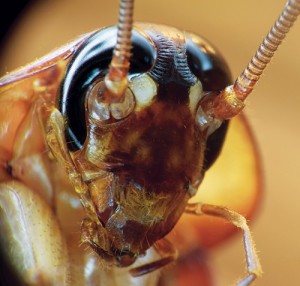
Arrest cockroach development by manipulation of available food and water, relative humidity, and temperature. Photo courtesy of, and copyrighted by, Gene White, pmimages@earthlink.net
Cockroaches do expertly survive, changing minimally for 200 million years. If pest management professionals (PMPs) don’t expertly intervene, survival is certain. With more than 4,000 species globally, not all species of cockroaches are pestiferous. Species under the pest classification have been distributed from tropical climates to urban areas within temperate zones through commerce. Annually, Americans spend about $1.5 billion to eliminate cockroach infestations, mostly ineffectively. Given this fact, there’s considerable opportunity for PMPs to offer successful cockroach service. Consider:
■ Do interview clients to gather detailed information about cockroach sightings and infestations. Take notes.
■ Don’t overlook any detail provided in the question-and-answer discovery process with clients because the smallest detail could be key to a successful intervention.
■ Do conduct a thorough inspection for any evidences of cockroach activity, such as odor, carcasses, exoskeleton fragments, oothecae (egg containers) and feces.
■ Don’t deploy any insecticides or device interventions until the structure and property are completely inspected.
■ Do place emphasis on inspection and monitoring to underwrite all nonchemical and chemical control decisions.
■ Don’t forget to inspect areas where wood, water and warmth intersect.
■ Do use a pest sighting log to integrate structural occupant observations as a cultural control.
■ Don’t forget to emphasize or provide occupant responsible resource methods (sanitizing).
■ Do organizational cleaning. For example: Eliminate cardboard and ensure first in, first out product rotation.
■ Don’t forget to check the Master Cleaning Schedule — using appropriate cleaning materials on a set schedule — to delegate and complete resource cleaning (RC).
■ Do consider a biological gel RC program to reduce and/or eliminate floor-level organic matter and resultant odorants.
■ Don’t neglect to incorporate nonchemical harborage exclusion techniques, such as caulking, weather-stripping, etc.
■ Do use traps and vacuuming to remove cockroaches.
■ Don’t rule out the use of heat as treatment.
■ Do directly apply dry steam units (as used for bed bug control) to kill cockroaches on contact, which might be practical in some situations.
■ Don’t forget to use low mammalian toxicity insecticides.
Dr. Mitchell, D.O., Ph.D., M.P.H., B.C.E., a board-certified physician and entomologist, serves as principal technical specialist for PestWest Environmental. He can be reached at doc.mitchell@pestwest.com or 866-476-7378.
Leave A Comment